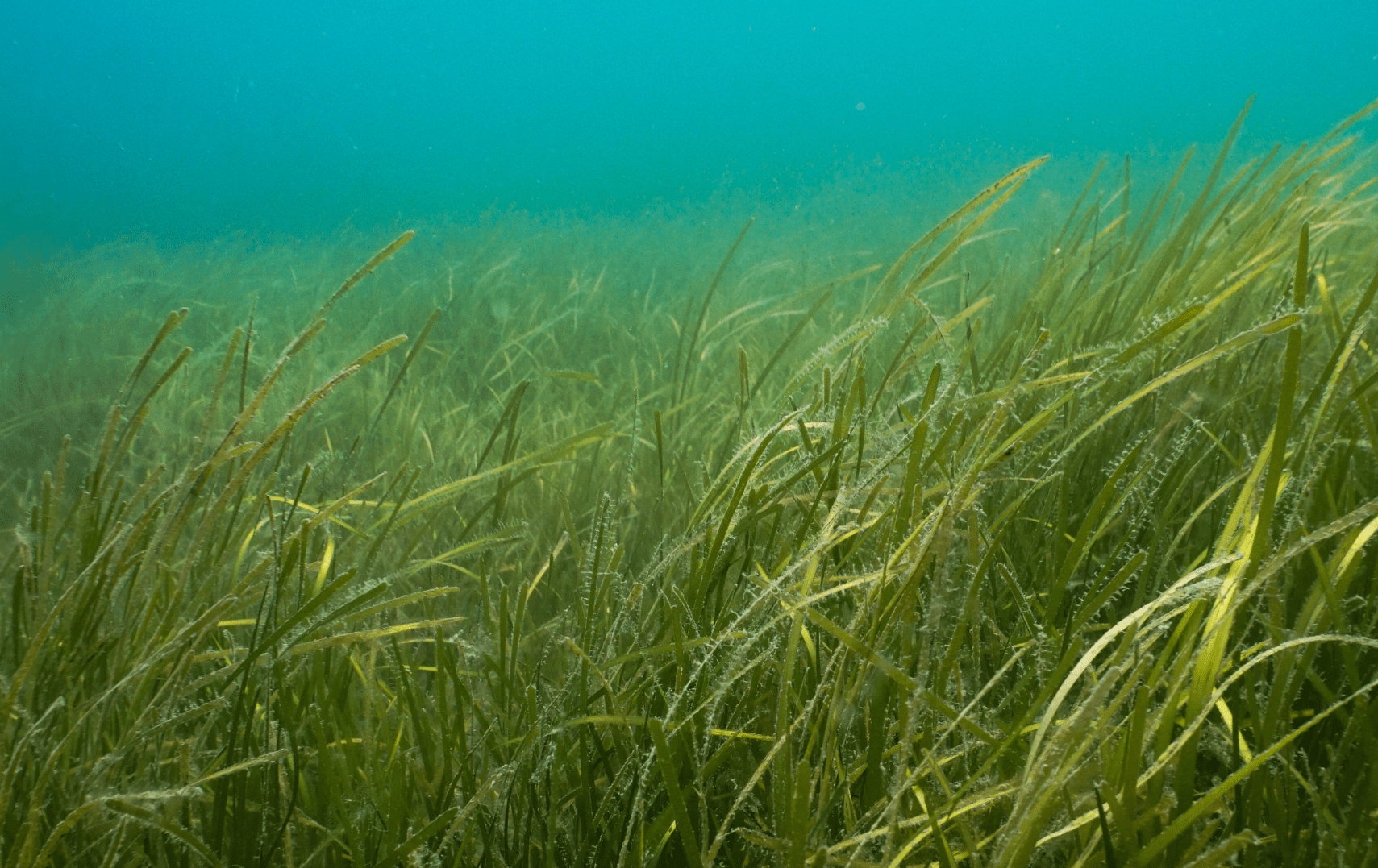Boosting Scotland's Coastline: Seagrass Restoration Bids

Table of Contents
The Importance of Seagrass Meadows in Scotland
Seagrass meadows are often called the "blue forests" of the ocean, and for good reason. These underwater flowering plants provide a multitude of ecological and economic benefits to Scotland's coastal regions. Their importance extends far beyond their beauty, impacting everything from our climate to our fisheries.
-
Carbon sequestration: Seagrasses are highly effective carbon sinks, capturing and storing significant amounts of atmospheric CO2 – up to 35 times more efficiently than terrestrial forests per unit area. This makes seagrass restoration a powerful tool in mitigating climate change. This crucial role in carbon capture and storage makes seagrass restoration projects increasingly attractive to climate-conscious funding bodies.
-
Biodiversity hotspots: Seagrass meadows provide crucial habitats for a wide range of species. They are nurseries and feeding grounds for commercially important fish like cod, plaice, and sole, as well as numerous invertebrates and marine mammals, supporting a thriving and complex food web. The biodiversity supported by healthy seagrass contributes to a resilient and productive marine ecosystem.
-
Coastal protection: Seagrass beds act as natural buffers, reducing the impact of waves and storms on coastlines. Their root systems stabilize sediments, preventing erosion and protecting valuable coastal infrastructure. This natural coastal defence reduces the need for expensive and environmentally damaging artificial solutions.
-
Fisheries support: Seagrass meadows serve as vital nurseries and feeding grounds for commercially important fish species, contributing directly to the economic viability of Scotland's fishing industry. Healthy seagrass means healthier fish stocks and a more sustainable fishing industry.
Current Status of Seagrass in Scotland and Threats
Despite their importance, seagrass meadows in Scotland have suffered significant losses over the past century. The extent of decline varies across different regions, but the overall trend is concerning.
-
Historical declines due to pollution and coastal development: Pollution from agricultural runoff, sewage, and industrial discharge has significantly damaged seagrass habitats. Coastal development, including harbour construction and land reclamation, has also led to direct habitat loss. These historical impacts continue to affect current seagrass health.
-
Ongoing threats from boat anchoring, dredging, and unsustainable fishing practices: Damage from boat anchors, destructive dredging activities, and unsustainable fishing practices (e.g., bottom trawling) continue to threaten remaining seagrass meadows. These ongoing threats require robust management and regulation to protect existing habitats.
-
Impact of climate change on seagrass health and resilience: Climate change is exacerbating existing threats, through rising sea temperatures, ocean acidification, and increased storm intensity. These factors reduce seagrass resilience and make them more susceptible to disease. Climate resilience needs to be a key factor in seagrass restoration planning.
-
Specific examples of areas in Scotland experiencing significant seagrass loss: Specific locations exhibiting significant loss, while requiring sensitive handling to avoid disclosing vulnerable areas, underscore the widespread nature of the problem and the urgent need for effective restoration efforts. Further research and monitoring are vital to pinpoint affected areas and inform effective restoration strategies.
Seagrass Restoration Bids: Funding and Projects
Securing funding is crucial for the success of seagrass restoration projects. Several funding opportunities exist for organizations and individuals committed to restoring Scotland's seagrass meadows.
-
Government grants and funding initiatives: Various government agencies, including Marine Scotland, offer grants and funding initiatives specifically for marine conservation projects, including seagrass restoration. These grants often require detailed proposals outlining project goals, methodology, and anticipated impact.
-
Private sector investment and corporate social responsibility programs: Increasingly, private companies are investing in environmental conservation projects as part of their corporate social responsibility programs. These partnerships can provide significant funding and support for seagrass restoration initiatives.
-
EU funding for marine conservation projects: The EU continues to offer funding for marine conservation projects through various programs. Seagrass restoration initiatives align well with EU environmental goals and can attract substantial funding.
-
Examples of successful seagrass restoration projects in Scotland: Highlighting successful past projects showcasing effective methods and positive outcomes can attract further investment and demonstrate the viability of restoration efforts. Successful case studies are critical in demonstrating the efficacy of different approaches and inspiring further action.
Key Techniques in Seagrass Restoration
Seagrass restoration employs various techniques, each tailored to specific site conditions and seagrass species.
-
Seed collection and propagation techniques: Collecting seeds from healthy seagrass meadows and propagating them in nurseries before transplanting them to restoration sites is a common and effective approach.
-
Transplanting seagrass shoots from healthy areas: Transplanting healthy seagrass shoots from donor areas to restoration sites is another effective method, especially when dealing with larger areas.
-
Creation of artificial reefs to encourage seagrass growth: Creating artificial reefs can provide suitable substrates for seagrass to colonize, particularly in areas where natural substrates are lacking or degraded. These structures can enhance habitat complexity and promote successful colonization.
-
Monitoring and evaluation methods to assess restoration success: Regular monitoring and evaluation are crucial to assess the success of restoration efforts. This involves tracking seagrass growth, density, and overall health. Effective monitoring provides valuable data for adaptive management and ensures project success.
Community Involvement and Citizen Science
Engaging local communities and leveraging citizen science initiatives is critical for successful and sustainable seagrass restoration.
-
Volunteer monitoring programs: Engaging local volunteers in monitoring seagrass meadows provides valuable data and fosters a sense of ownership and responsibility for the environment. Citizen scientists contribute significantly to data collection and monitoring efforts.
-
Public awareness campaigns to educate communities about seagrass importance: Raising public awareness about the ecological and economic importance of seagrass is essential for securing community support and ensuring the long-term success of restoration efforts. Effective communication is crucial for building support and encouraging participation.
-
Community-based restoration projects: Involving local communities directly in restoration projects fosters a sense of ownership and stewardship, ensuring the long-term success of restoration efforts. Community involvement is vital for sustainable conservation efforts.
-
Citizen science data collection contributing to research and management decisions: Citizen science data can supplement professional monitoring efforts, providing valuable information for research and management decisions. Citizen scientists are key partners in gathering vital data and monitoring restoration efforts.
Conclusion
Seagrass restoration is paramount to the health of Scotland's coastline and its marine ecosystems. By securing funding through targeted seagrass restoration bids, and by engaging communities in active restoration and conservation efforts, we can reverse the decline of these vital habitats. The benefits extend far beyond environmental protection; healthy seagrass meadows contribute to sustainable fisheries, coastal resilience, and effective carbon sequestration. Let's work together to secure the future of Scotland's seagrass, contributing to successful seagrass restoration bids and ensuring the vitality of our precious coastline. Learn more about how you can support seagrass restoration in Scotland and get involved in protecting this crucial ecosystem. Search for "Seagrass Restoration Scotland" to find organizations and projects near you.

Featured Posts
-
 Nuggets Stars Injury Impact On Game Against Okc Thunder
May 04, 2025
Nuggets Stars Injury Impact On Game Against Okc Thunder
May 04, 2025 -
 Public Concern Mounts Over Kanye Wests Influence On Bianca Censori
May 04, 2025
Public Concern Mounts Over Kanye Wests Influence On Bianca Censori
May 04, 2025 -
 Ufc Veterans Return A Year Long Hiatus Ends In The Octagon
May 04, 2025
Ufc Veterans Return A Year Long Hiatus Ends In The Octagon
May 04, 2025 -
 Watch The Kentucky Derby 2025 Online Pricing Availability And Streaming Services
May 04, 2025
Watch The Kentucky Derby 2025 Online Pricing Availability And Streaming Services
May 04, 2025 -
 Sandhagen Vs Figueiredo Ufc Fight Night Predictions And Analysis
May 04, 2025
Sandhagen Vs Figueiredo Ufc Fight Night Predictions And Analysis
May 04, 2025
